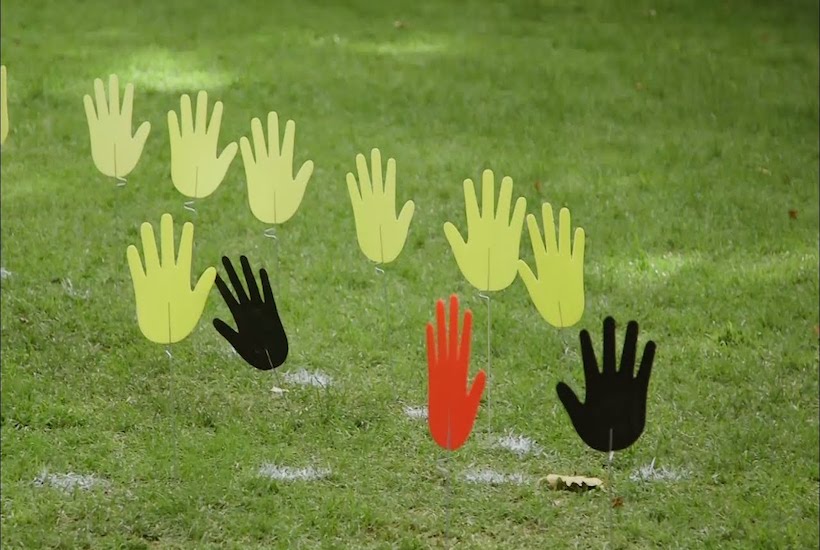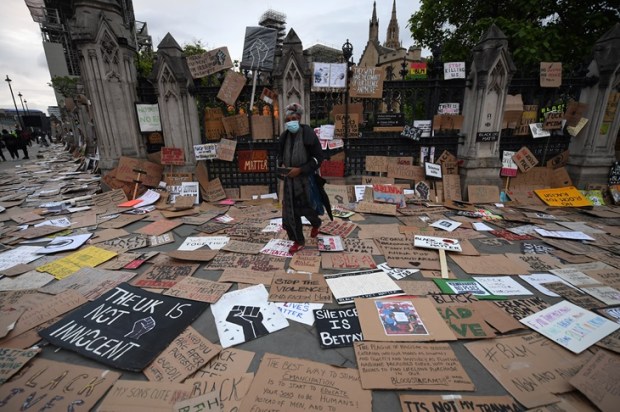Australia, as with so many other Commonwealth nations settled by colonial force, has a difficult relationship with its Indigenous peoples. In fact, Australia remains the only Commonwealth nation lacking any kind of formal treaty with its Indigenous population – a reality that many supporters of a treaty assert is a significant barrier to true reconciliation and improved Indigenous outcomes in general.
Calls for a treaty have recently reached the highest levels of government, with the Minister for Indigenous Australians, Ken Wyatt, promising a referendum on the issue of constitutional recognition for Indigenous peoples within the current term of government. However, to assume that a path to treaty is politically feasible requires some uncomfortable truths to be reckoned with – either a treaty would be so limited as to be merely symbolic or it must create a legal distinction between Australian citizens on the grounds of Indigenous heritage.
The legacy of terra nullius and the violent dispossession of Indigenous land continues to complicate the relationship between Indigenous Australians and the Australian state. There is now widespread public recognition in Australia that the treatment of Indigenous peoples by early British settlers was nothing short of horrific – a dark history of mass murder, rape, legal disenfranchisement, racial abuse and cruel paternalistic policy. Indigenous children were forcibly separated from their families by the Australian state as late as 1970 through government efforts to force the rate of cultural assimilation – a period in Australia’s history that has come to be known as the Stolen Generation.
Accordingly, any debate on the need for a treaty, or the form such a treaty should take occurs within the context of this historical burden – there is no longer any serious discourse in Australia suggesting that settlement did not cause deep and lasting intergenerational harm to Indigenous peoples. The nature of contemporary Indigenous disadvantage has become the first point of difference when interrogating the need for a treaty – would the resource invested in a treaty process be better allocated to directly tackling Indigenous health and social welfare issues instead?
Advocates for a treaty often recognise that inherent direct limitations of a treaty yet argue for it nonetheless on the grounds that symbolic recognition of Indigenous peoples serves as a critical precursor to redressing the inequality between Indigenous and non-Indigenous groups. George Williams, an academic specialising in Australian constitutional law at the University of New South Wales contends that treaties serve to create foundations for Indigenous self-governance and determination by grappling with the historic sense of powerlessness and injustice felt amongst Indigenous groups. Stan Grant – a prominent commentator on Australian Indigenous issues – advocates for a treaty on Rawlsian grounds, in that Indigenous disadvantage undoubtedly persists and that a truly just liberal democracy could agree to a treaty that begins to confront this disadvantage in a way that doesn’t compromise individual liberty.
These calls for a treaty – well intentioned as they undoubtedly are – neglect the challenges inherent in defining the essential form of a treaty; what specific clauses should a treaty contain, and which peoples or groups should be a party to it?
The most recent authoritative position on what a treaty process should entail, the Uluru Statement From the Heart (also known as the Uluru Statement) emerged from a convention of over 250 Indigenous and First Nations people in May 2017. The Uluru Statement did not seek to define the precise nature of constitutional reform necessary to achieve the objectives of Indigenous people in seeking a treaty, rather to outline two broader demands; a constitutionally recognised First Nations Voice and the establishment of a Makarrata Commission, otherwise defined as a dedicated governmental body for negotiating treaty arrangements.
Such a statement should be lauded as a positive attempt to make progress on what is a hugely important issue for many Indigenous Australians. However the reality is that such statements are so vague as to be open to multiple interpretations, as well as ineffective in advancing the objective of developing a specific treaty format that could be accepted by Australian voters.
The concept of a First Nations Voice, or a constitutionally recognised Indigenous advisory body to the parliament is ridden with practical drawbacks, not least the fact that constitutional change is historically challenging to effect via referendum in Australia – only 8 of 44 referendums since 1901 have resulted in a change to the constitution. Ken Wyatt, the minister tasked with overseeing the treaty and recognition process, rejects the notion of a singular First Nations Voice in favor of a tiered approach – a major point of difference to the position adopted by the convention.
Furthermore, the concept of a singular government body to negotiate treaties is also fraught with difficulty – at what level should such negotiations occur? There is enormous diversity in language, tribal affiliation and history encompassed in the First Nations of Australia – a significant challenge in defining the scope of any treaty, or the representation required to ratify it.
The issue of developing a specific treaty, or treaties, and presenting them to the electorate in a referendum is thus inextricably linked to the exact wording and legislative implications of any treaty. Despite certain opinion polls suggesting that the idea of constitutional recognition for Indigenous peoples is a popular one proponents of a treaty should recall the lessons from a previous failed referendum – this being the 1999 vote on whether Australia should become a republic. The notion of attaining self-governance with an Australian head of state was attractive to a majority of voters, however rifts within the republican movement itself ultimately resulted in a so-called ‘appointment’ model being proposed as the form the republic should take – that is, the head of state would be elected by members of parliament, not voters directly (as is the case in the United States, for example). In the sense that the specific wording on a ballot paper matters to Australian voters the circumstances of 1999 are highly analogous to the present situation – it is possible for voters to support an idea in abstract form, yet oppose any implementation of said idea that violates tightly held Australian cultural principles.
Donald Horne, author of the exceedingly influential cultural critique The Lucky Country made the observation that Australians are, in general, an egalitarian people motivated by a deeply held cynicism and aversion to codified social hierarchies. Horne’s book was published in 1964 – three years before a referendum was held in 1967 on the issue of counting Indigenous Australians in population figures recorded for the census. A commonly held (yet incorrect) assumption in Australia is that this referendum was carried on the question of whether or not to grant Indigenous Australians voting rights, and to classify them as normal citizens. Although the actual motion supported was far weaker in a legislative sense the symbolic nature of the result – a resounding yes vote to stripping the constitution of terms and words intended to define Indigenous Australians as a separate class of person – proved Horne’s description to hold some predictive ability.
It is in the same context of the 1967 result (where Australian voters chose to remove constitutional distinctions pertaining to Indigenous Australians) that the opposition to the forms and demands of a treaty are most commonly based – intuitively, the average Australian opposes legislation that would provide the basis for different legal treatment based on race, or is worded in a way that alludes to the possibility of different treatment.
The Coalition is a nominally conservative government. A number of conservative members of parliament have already expressed their concerns about constitutional change that alters the legal rights of individuals based on race, or the obligations of government towards certain groups based on the Indigenous heritage of these groups. Proponents of constitutional change related to a treaty are in the position of asking Australian voters to revisit the result of 1967 – in essence, a treaty that encompasses new legal rights for Indigenous people can only be passed if the electorate agrees that Indigenous people should have special treatment in the constitution.
A pervasive sense of irony surrounds the issue. In little over fifty years a country that voted to treat its Indigenous people equally will be asked to vote on the matter of whether they should again be treated differently. The content of any legislation is besides the point – most Australians are not interested in the detail of constitutional law, and will vote based on an instinctive sense of fairness.
In his bestselling book The Righteous Mind the American moral psychologist Jonothan Haidt warns of the dangers for social cohesion inherent in articulating and exemplifying group differences. Efforts to make diversity salient and accepted are often antithetical to achieving better relationships between groups – this is a risk that Australia must grapple with if it chooses to proceed down the path of a treaty. Many academics are prone to focussing on the high level objectives of a treaty process – such as moral responsibility to atone for past harms – at the expense of questioning the possibility of Australian voters supporting reparations and the return of land rights under native title.
In evaluating the net benefit to Australian society the potential harms to existing relationships between Indigenous and non-Indigenous Australians must be considered – indeed, a similar debate occurred when Australia conducted a postal plebiscite on the topic of same-sex marriage. It was decided then that the risks to same-sex attracted people during the conduct of the plebiscite (in terms of increased discrimination and anti-homosexual sentiment) were necesary costs in advancing the agenda of same-sex marriage.
Is the same true for the concept of treaty, a vastly more complex legislative matter? To some academics and activists the possibility of rectifying what is perceived as a gross moral wrong surpasses the desire to understand any associated consequences. Uncompromising moral stances may be satisfying in themselves but they are not alone sufficient to force constitutional change.
Many Indigenous Australians are themselves opposed to a treaty for the same reasons that non-Indigenous treaty critics are – they see it as a symbolic exercise that would not advance Indigenous health or social outcomes in a meaningful way, and as such it should be deferred in favour of more effective action. Indeed, the postal plebiscite on same-sex marriage cost the Australian government over $122 million – a similar figure, if not far more, would have to be spent formulating a treaty and putting it to a vote.
The ongoing issues surrounding Indigenous rights and recognition in Canada suggest that the treaty process is no panacea for poor Indigenous relationships – aindeed, Canada is still negotiating treaties with Indigenous groups today as well as facing an inquiry into a possible genocide. Australia, as a nation yet to sign a single treaty, is not exempt from facing the same kind of protracted legal challenge in the future. But the Canadian experience goes to show that no amount of investment in a treaty process can absolve the guilt or latent impetus for change, nor redress the alleged wrongs suffered by Indigenous peoples.
So the question stands – why should Australia consider proceeding with a treaty process when so many other mechanisms for advancing the cause of Indigenous Australians remain open? Government programs, charities and scholarships intended for Indigenous citizens are already administered under the auspices of existing laws – that is, to some degree the Australian state has already determined a series of targeted solutions to ameliorate Indigenous disadvantage.
Presumably a treaty process would leave such programs and other measures untouched – and so those in favour of a treaty are again confronted with the unpalatable prospect of explicitly defining exactly what it is they are trying to achieve. A symbolic victory would be so very hollow for the Indigenous peoples relying on pragmatic government assistance. The intrinsic complexity of a treaty process is yet to be respected in Australia, and when it is Australians will rightfully ask: why do this, when we could do so much more?
Got something to add? Join the discussion and comment below.
Got something to add? Join the discussion and comment below.
Get 10 issues for just $10
Subscribe to The Spectator Australia today for the next 10 magazine issues, plus full online access, for just $10.


























Comments
Don't miss out
Join the conversation with other Spectator Australia readers. Subscribe to leave a comment.
SUBSCRIBEAlready a subscriber? Log in